Achieving Consensus
Course Length: ½ or 1 day
The ability to work together, make decisions together, and implement them is critical for success in group activities. This course offers a practical approach to consensus building, explaining the concept of consensus, why it is important, and how it fits with other decision-making styles. It explores how to reach consensus and alignment, and provides the student with the necessary tools to help his or her team succeed.
Part 1: Defining Consensus
Part 2: Your Role On the Road to Consensus
Part 3: Meeting to Achieve Consensus
Part 4: Tools and Techniques
Part 5: More Tools and Techniques
Part 6: Arriving At Consensusville
Body Language Basics
Course Length: ½ or 1 day
Can you tell if someone is telling the truth just by looking at them? It is a skill that a lot of people do not have. Through Body Language Basics you will be given a set of tools to use to your advantage. These tools can be utilized in the office and at home. Understanding Body Language will provide you a great advantage in your daily communications.
Body Language Basics will provide you with a great set of skills to understand that what is not said is just as important as what is said. It will also give you the ability to see and understand how your own Body Language is being seen. You will be able to adjust and improve the way you communicate through non-verbal communications.
Module One: Getting Started
Module Two: Communicating With Body language
Module Three: Reading Body Language
Module Four: Body Language Mistakes
Module Five: Gender Differences
Module Six: Non-Verbal Communication
Module Seven: Facial Expressions
Module Eight: Body Language in Business
Module Nine: Lying and Body Language
Module Ten: Improve Your Body Language
Module Eleven: Matching Your Words to Your Movement
Module Twelve: Wrapping Up
Briefing Techniques – Getting Results from Your Management
Course Length: 2 or 3 days
Briefing skills, presentation techniques, presentation planning and speaking are becoming more important because meetings are taking up more and more of our executive and management work day. Yet the productivity generated by these has been declining steadily. Employees are burying themselves in a flurry of paper and our ability to communicate orally has decreased.
Using the methods in this course, the problem is attacked from two levels. First we enhance the ability of the presenter to communicate ideas through the use of eye contact, proper preparation, and effective use of visuals, i.e., flip charts, chalkboards, viewgraphs, power point, etc. We also concentrate on the ability of the listener to increase his/her absorption of presented materials. It is a speaker’s responsibility to do everything possible to insure that the audience understands the message and that includes presenting the information in an interesting and intelligent manner so as to increase the effective listening ability of the audience.
Many vital decisions in both government and industry are made on the strength of a briefing given by an employee who may or may not be able to communicate. At the least, this failure could cost money. At its worst, it could cost lives. Instruction gained through this course will assist in increasing the effectiveness of individual briefings.
***This course will be videotaped, and participants will get a copy of their presentation.
COURSE OBJECTIVES
Upon successful completion of this course, students should have a firm command of the following:
- Effective Listening Skills
- Effective Use of Visuals
- Body Language Appropriate to the Venue
- Proper Briefing Preparation Techniques
- Control of Natural Fears
- Ability to Handle Hands-On Briefing Situations
- Ability to distinguish between informational vs. decisional briefing
- Organizing a briefing logically to present and frame key messages
- Tailoring a briefing to the level and style of the manager being briefed
- Different ways to open and close presentations
- The ability to anticipate and respond better to Q & A
- Ability and skilled at selecting appropriate materials
- Gain knowledge of the use of Visual aids (when and how)
- Determine which planning tools to use for small informal and large formal briefings
TOPICS COVERED
- Types of Briefings and the various levels for presenting
- Listening Techniques
- Basic Briefings to Management
- Presentation Skills
- Eliminating Presentation Fear
- Briefing Preparation
- Visual Preparation
- Appropriate Use of Speaking Aids (flip charts, Power Point, Props, etc.)
- Formal Briefings vs. Informal Briefings
- Extemporaneous Speaking
- Handling the Question & Answer Period
- Meaningful Visual Preparation
- Informational Speaking
- Persuasive Speaking
The Business of Listening
Course Length: ½, 1 or 2 days
This course will show you how to become a better listener by demonstrating how your listening skills build either barriers or bridges. You will also learn ten steps to controlling emotional “hot buttons” and the impact of good listening skills on productivity. Most people think that the only message that will be heard is one of urgency; however, in today’s fast-paced world even urgent messages are ignored. Becoming an active listener will help your productivity and success by helping you extract important details from every message.
Part 1: Why Should You Listen?
Part 2: Four Key Elements of Good Listening
Part 3: Your Listening Style
Part 4: What’s Your Listening Attitude?
Part 5: Ten Tips for Tip-Top Listening
Call Center Training
Course Length: ½, 1, or 2 days
Phone skills are a highly valuable tool to have in an employee’s skill-set, and Call Center Training will help provide those skills. This course will help your participants improve their phone skills which will make them more confident, improve sales, and help gain new customers while retaining your current clientele. A more confident employee is also one that is happier, and happier employees will produce happier customers.
Call Center Training will lower costs as it can reduce turnover. Participants will learn the skills to improve productivity and performance. This will produce a positive environment throughout your company and help influence the organization as a whole. Evaluating metrics and coaching are also used to make sure the participants are reaching their potential, and to keep their skill-set at a high level.
Module One: Getting Started
Module Two: The Basics (I)
Module Three: The Basics (II)
Module Four: Phone Etiquette
Module Five: Tools
Module Six: Speaking Like a Star
Module Seven: Types of Questions
Module Eight: Benchmarking
Module Nine: Goal Setting
Module Ten: Key Steps
Module Eleven: Closing
Module Twelve: Wrapping Up
Communicating Across Cultures
Course Length: ½ Day
Increasingly, businesses around the world have become more interconnected, and companies have to think more globally in order to succeed. Despite economic ties with foreign nations, countries can be ill-prepared for doing business abroad, lacking the knowledge and sensitivity to adjust their business behavior to different cultural contexts. This course will provide you with strategies to communicate effectively across cultures.
Target Student
This course is for individuals who need to communicate clearly and effectively while conducting business in cultures other than their own.
Course Objectives
Upon successful completion of this course, students will be able to:
– Examine differences between cultures, identify methods of communicating effectively and appropriately with people from different cultures, and describe cultural differences in business protocol.
– Identify methods for creating high-performing, cross-cultural teams, describe strategies for conducting successful multicultural negotiations, and explore ways of effectively resolving conflict in other cultures.
Lesson 1: Communicating Across Cultures
Lesson 2: Working with Other Cultures
Communication Strategies
Course Length: ½, 1, or 2 days
For the better part of every day, we are communicating to and with others. Whether it’s the speech you deliver in the boardroom, the level of attention you give your spouse when they are talking to you, or the look you give the cat, it all means something. This workshop will help participants understand the different methods of communication and how to make the most of each of them.
Module One: Getting Started
Module Two: The Big Picture
Module Three: Understanding Communication Barriers
Module Four: Paraverbal Communication Skills
Module Five: Non-Verbal Communication
Module Six: Speaking Like a STAR
Module Seven: Listening Skills
Module Eight: Asking Good Questions
Module Nine: Appreciative Inquiry
Module Ten: Mastering the Art of Conversation
Module Eleven: Advanced Communication Skills
Module Twelve: Wrapping Up
E-Mail Management
Course Length: ½, 1 or 2 days
E-mail is very much an integral part of business communication today. Originally intended as a productivity-enhancing, time-saving tool, e-mail has evolved into a time-consuming, productivity-draining obligation that takes up much of our time and attention during business and personal hours. E-MAIL MANAGEMENT is the course to help you regain control of e-mail. The 50 tips in this course will help you learn how to manage your inbox, use Microsoft Outlook’s time-saving features, limit your personal use, and incorporate productivity-enhancing policies in your workplace.
Part 1: Taking Control of Incoming E-Mail
Part 2: Automating E-Mail Management with Microsoft Outlook®
Part 3: Managing Your Outgoing E-Mail
Part 4: Establishing Organizational E-Mail Management Policies
Face-to-Face Communication
Course Length: ½ or 1 day
Even as technology has allowed us to connect with an ever-expanding global network through the click of a mouse, face-to-face communication is still as important as ever. Improving one’s in-person communication may seem nonessential and downright quaint in this computerized age, yet many workplace situations, often those involving conflict, feelings, or other sensitive issues, still demand human contact. FACE-TO-FACE COMMUNICATION explores why personal contact remains the most powerful type of human interaction and what students can do to improve their skills to become excellent communicators.
Part 1: Face the Facts
Part 2: Practice Your Nonverbals
Part 3: Choose Your Words Carefully
Part 4: Listen Closely
Part 5: Communicate Across the Miles
Media and Public Relations
Course Length: ½, 1, or 2 days
In this workshop, you will get knowledge you need to manage effectively your image and value by forming solid networks through strategic communication planning. Effective networking is essential for day-to-day business or for those times when you are actively pursuing job opportunities.
Networking and public relations is the most successful method of communicating your value to those around you. Furthermore, good networking skills enable you to tap into those relationships you already have and increase the scope of your network. The larger the scope the more people knows you and offers you opportunities.
This workshop is designed to give you practical teaching and hands-on tools that will get you networking once you complete this course. Before we begin, let’s kick of the session with a networking ice breaker.
Module One: Getting Started
Module Two: Networking for Success (I)
Module Three: Networking For Success (II)
Module Four: The Meet and Greet
Module Five: Dressing for Success
Module Six: Writing
Module Seven: Setting Goals
Module Eight: Media Relations
Module Ten: Social Media (The PR Toolkit)
Module Eleven: Employee Communications
Module Twelve: Wrapping Up
Presentation Skills
Course Length: ½, 1, or 2 days
This program can benefit anyone who presents; a trainer, a meeting facilitator, speaker, or seminar discussion leader. No matter which role you are assuming, this workshop will help you become more efficient and proficient with the skills of providing information to others.
Module One: Getting Started
Module Two: Creating the Program
Module Three: Choosing Your Delivery Methods
Module Four: Verbal Communication Skills
Module Five: Non-Verbal Communication Skills
Module Six: Overcoming Nervousness
Module Seven: Creating Fantastic Flip Charts
Module Eight: Creating Compelling PowerPoint Presentations
Module Nine: Wow ‘Em with the Whiteboard
Module Ten: Vibrant Videos and Amazing Audio
Module Eleven: Pumping it Up a Notch
Module Twelve: Wrapping Up

